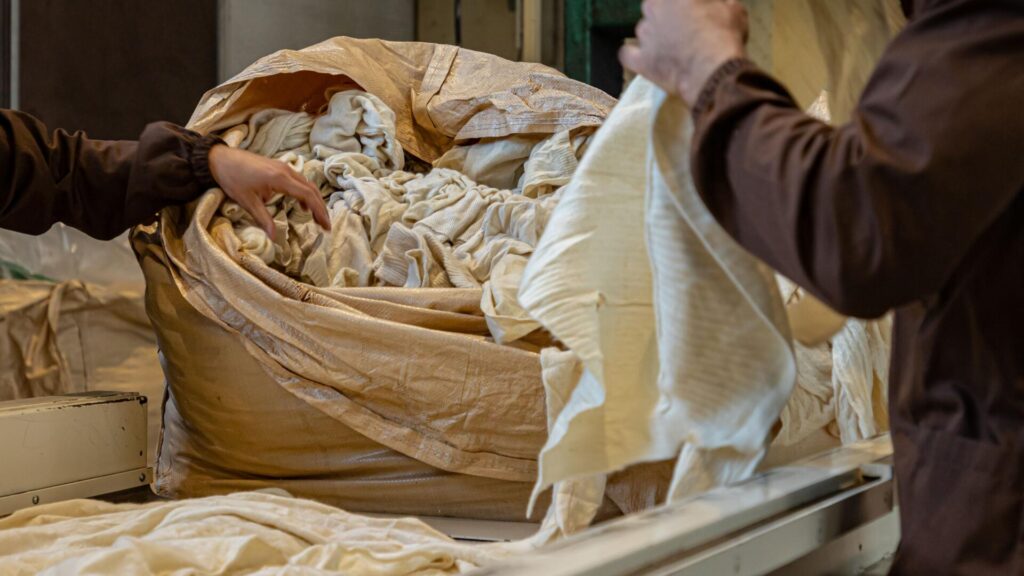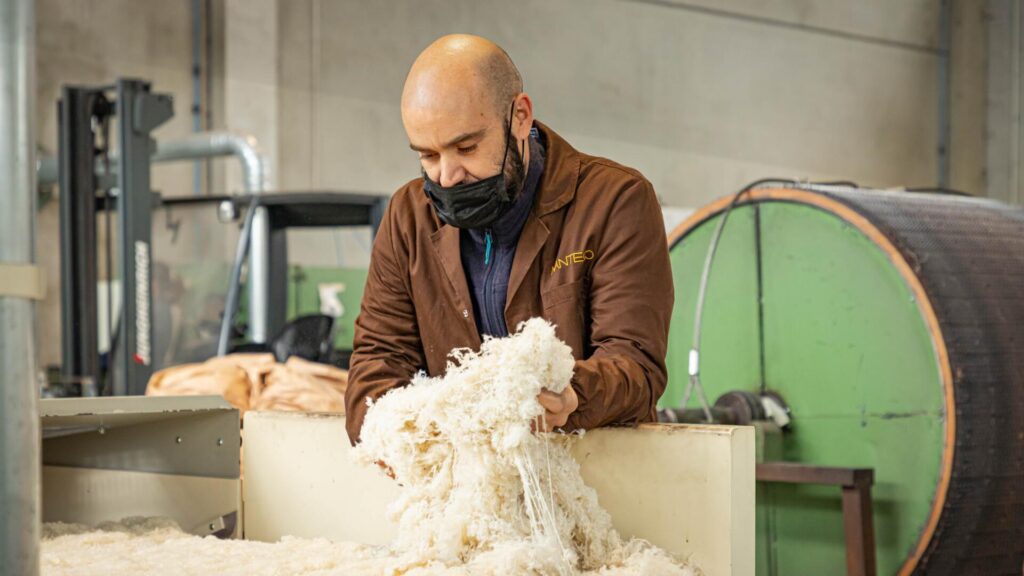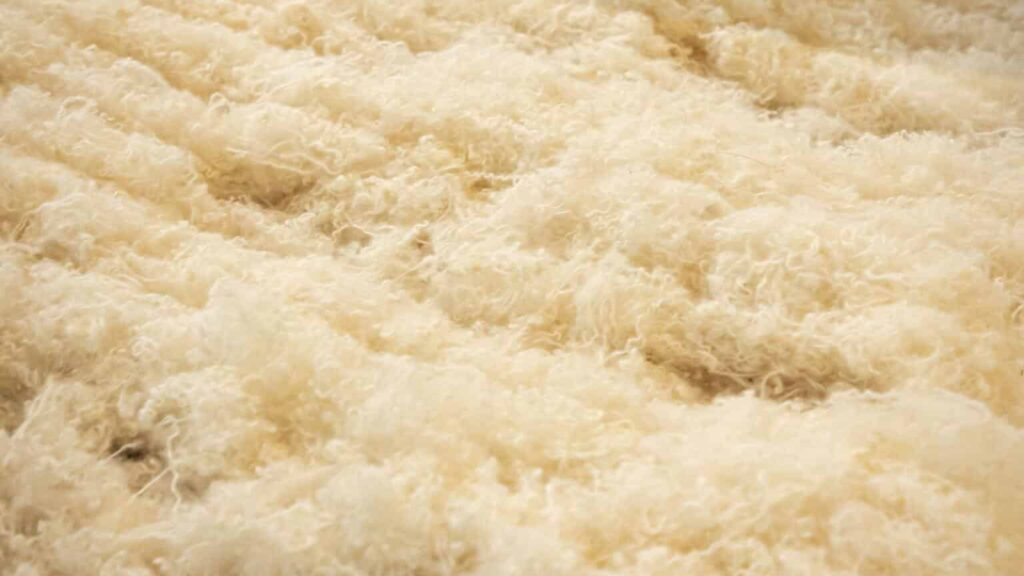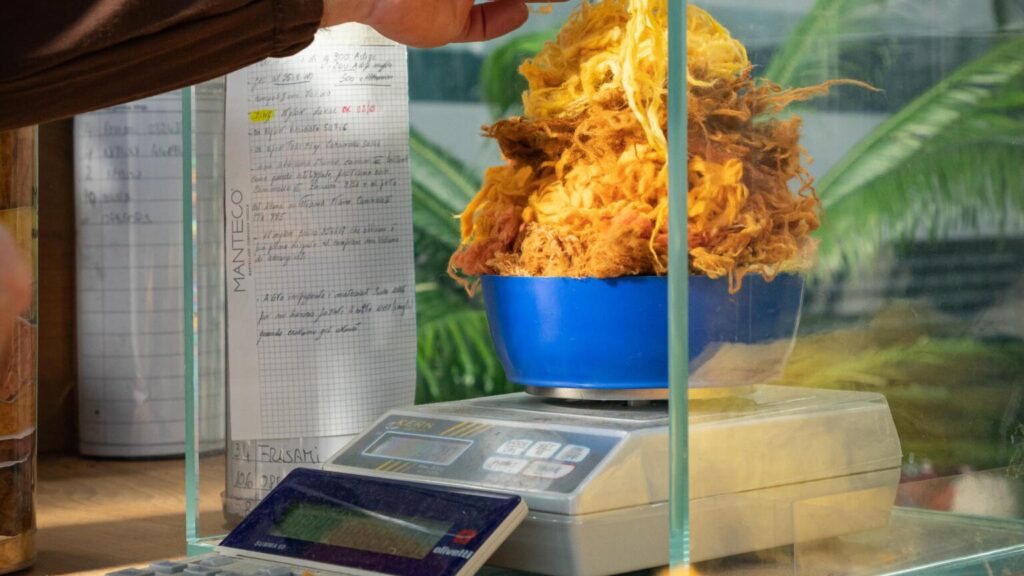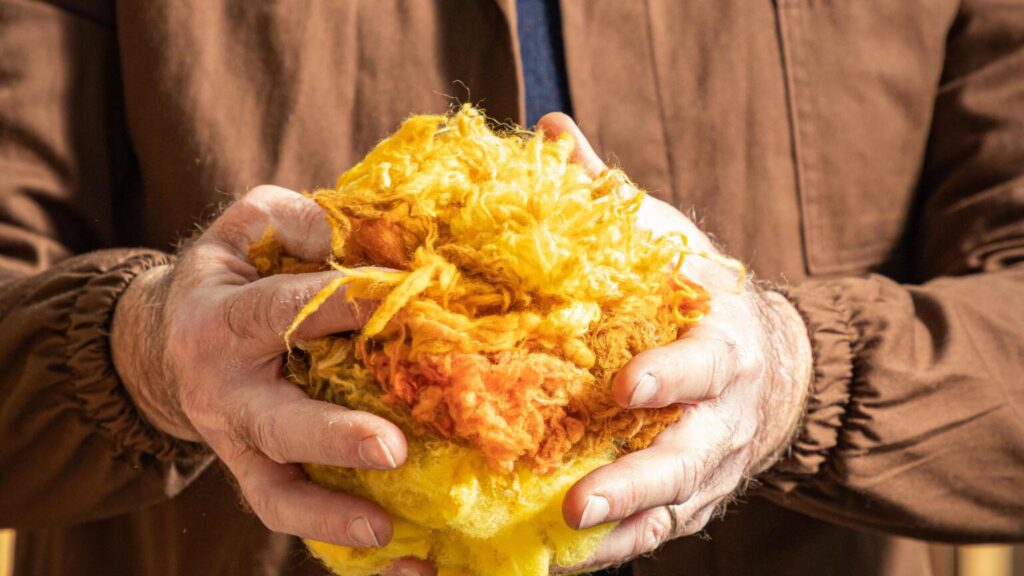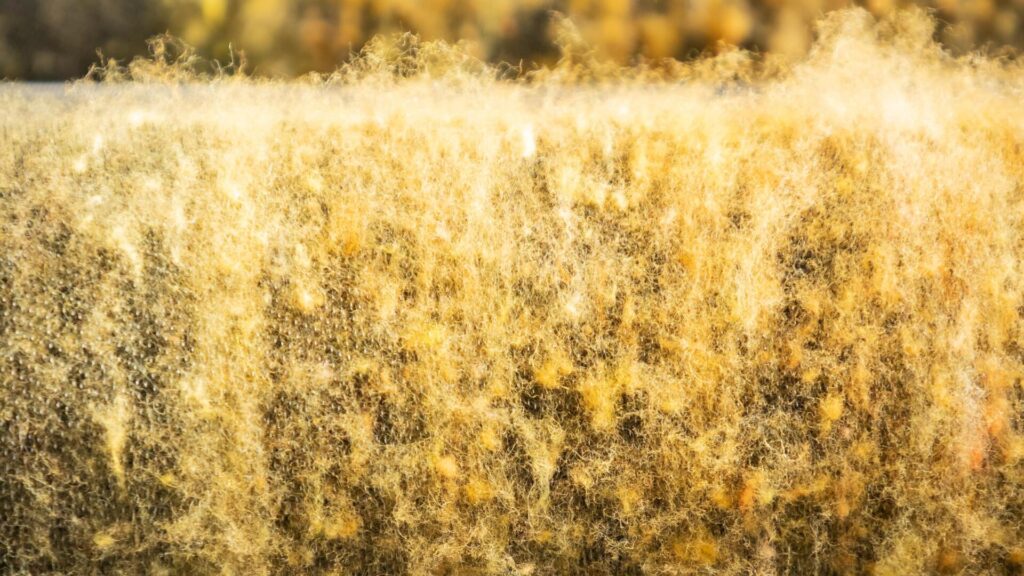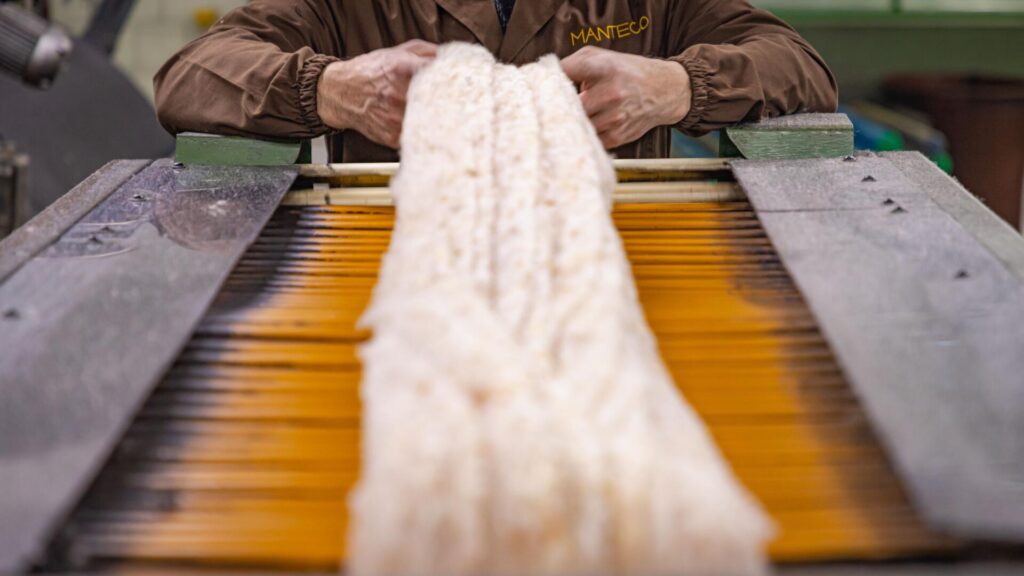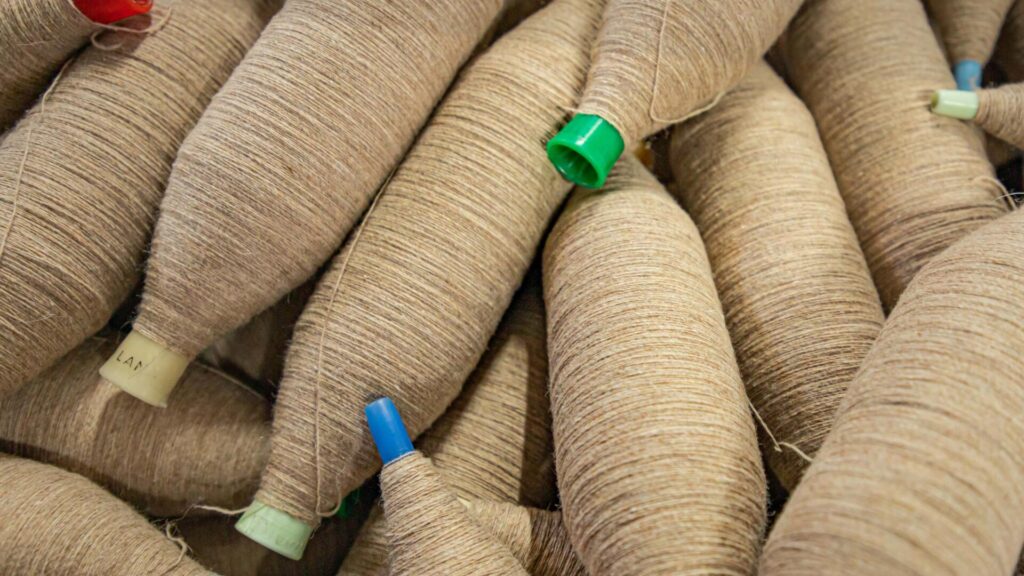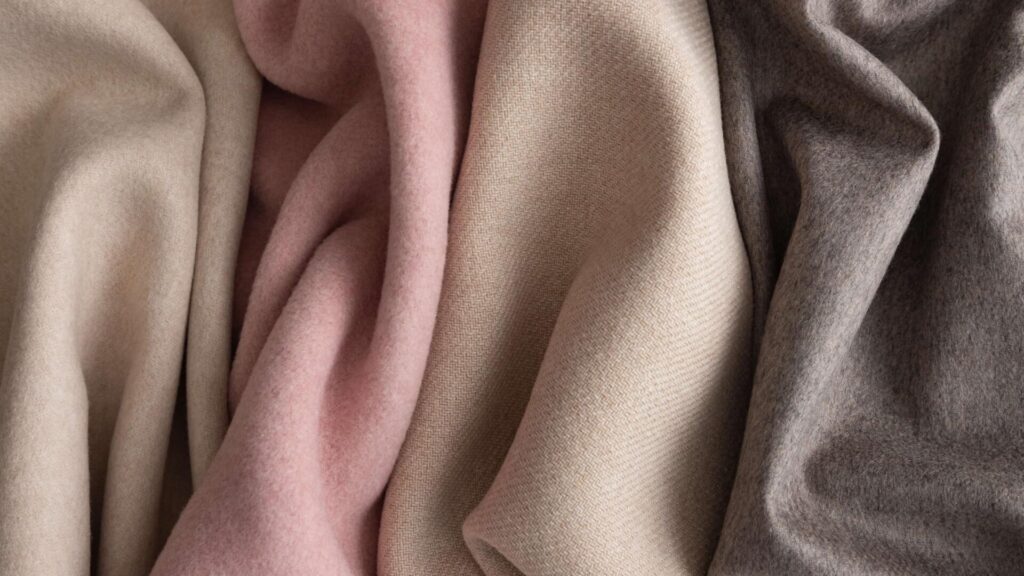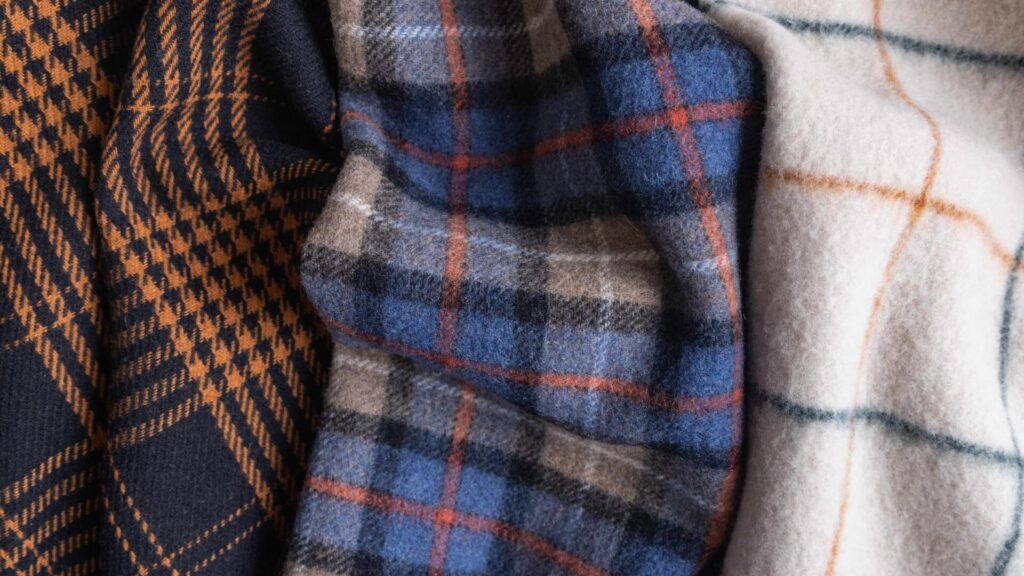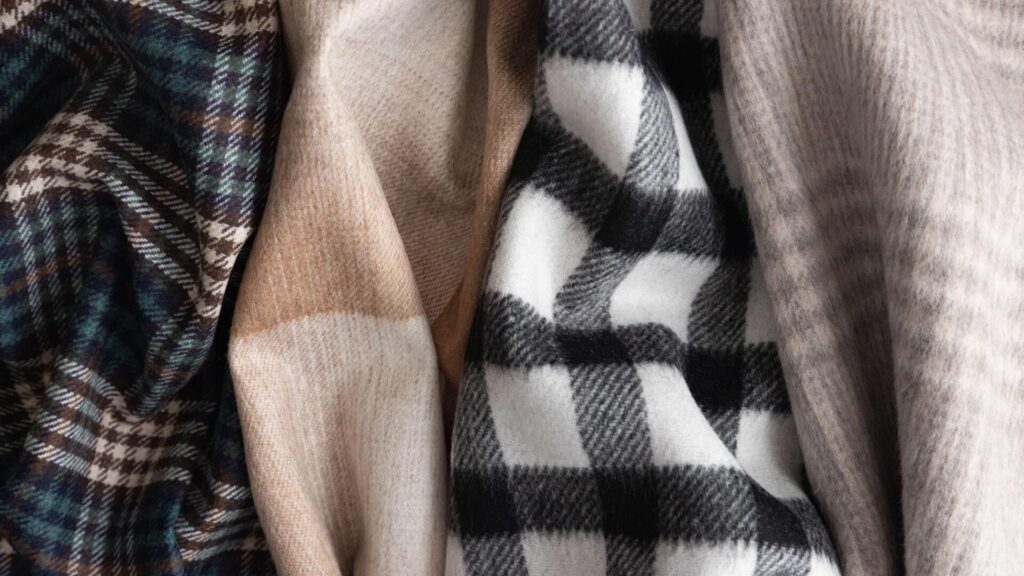How is a recycled wool fabric made?
Discover a method that has been passed down for generations
An evergreen and circular practice that gives new life to old garments and scraps
Wool is an extremely durable animal fiber, so garments made with it usually have a long life, but that’s not all. Wool is also highly and easily recyclable and the resulting ‘new’ fiber can be re-used to create luxurious fabrics, thus extending the lifetime of garments, avoiding – or reducing -the use of virgin materials and helping reducing stress on the environment. One of the most well-known hubs for wool recycling is Prato, Italy, where the biggest textile district of Europe has mastered this circular economy practice, which is also chemical-free and dye-free. Such recycling has been performed on an industrial scale since the 19th century. The wool recycling process is labor intensive and requires specialized knowledge, so let’s dive into the subject and see what’s behind a recycled wool fabric.
1) "Sbambolatura" or QUALITY CHECK of garments

Before the circular economy of wool garments starts, a fundamental phase takes place in order to determine wether they are no longer usable or they can continue their life and be sold as vintage or second-hand clothing. We are talking about the so-called “Sbambolatura”, which – simply put – is an overall quality check on garments. All of this is done through a particular tool called “bambola” – ‘doll’ in English – which is a backlit and V-shaped dummy that reveals all the defects on garments.
❌ If the checked garment has defects, it is passed to the sorting phase, where it will be put with garments of similar color and composition, then recycled and used for producing recycled wool materials.
✔️ If the checked garment does not have defects, it will be put again into the market as second-hand or vintage clothing, thus living a longer life!
2) SORTING garments and scraps per color and composition
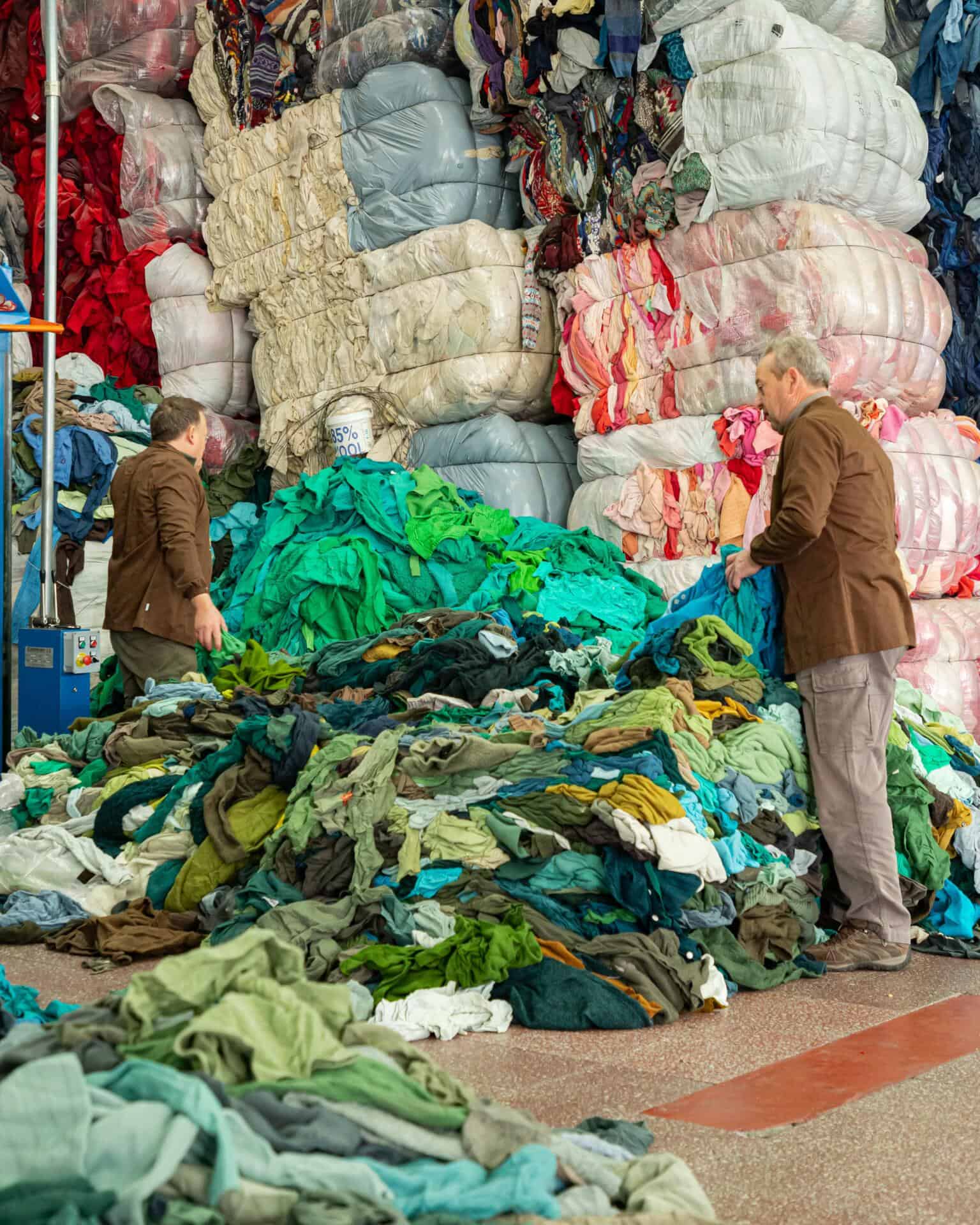
Recycled wool fabrics start from pre- and post-consumer wool garments and production scraps, which – before starting their journey to become ‘new’ fibers – must undergo the sorting process. In this phase, garments are masterfully divided by color and composition. This phase is done by the cenciaiolis, high-skilled artisans who are able to recognize fabrics (and their composition) just by touching them. Once old garments are sorted, they are sent to the next phase.
3) CLEANING of garments from non-recyclable elements
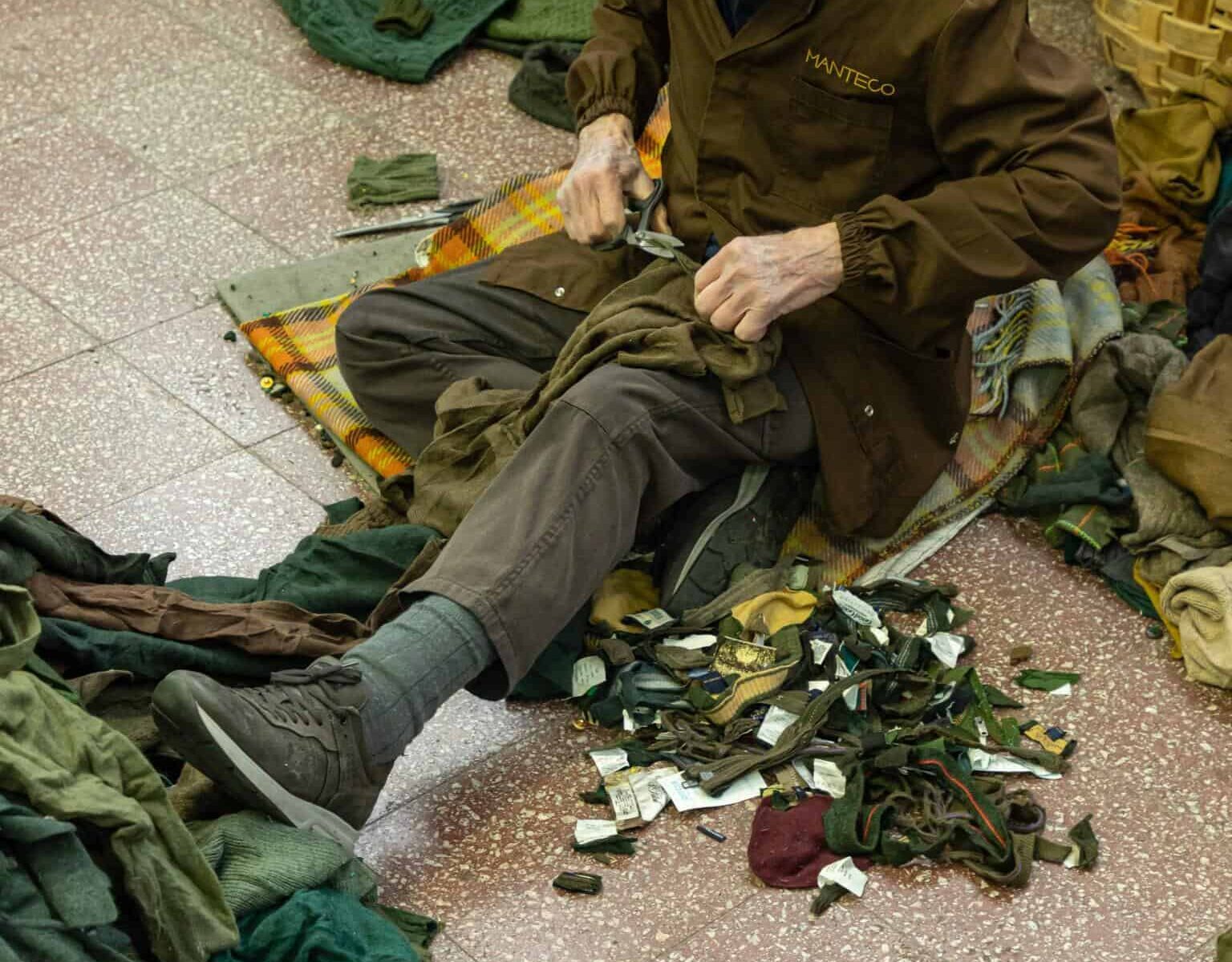
In this phase, the garments are manually cleaned from non-recyclable elements and parts that could contaminate the ‘new’ recycled fibers. Let’s see them here below:
- All the parts containing elastane are cut off the garment
- Brand labels and care labels are removed, as they are usually made of polyester and can subsequently hinder the recycling process and contaminate the composition of the ‘new’ fiber.
- Zippers – and the part of fabric/knit they are stitched to – are cut
- Buttons are manually pulled off the garment
- Linings are taken out of the garment
- Liners are cut off the garment, together with the part of fabric/knit they are bonded or stitched to
- Embroideries are cut off the garment
- And last but not the least, stitching made of a different material than the garments are cut off, together with part of the fabric/knit they stitched
4) SHREDDING of garments to turn them into recycled wool fibers
In this phase, the garments and scraps , which were carefully cleaned and divided by color and composition, are processed with a mechanical shredding machine. Old garments are carried on a conveyor belt, first through a series of blades, or guillotines, then through two cylinders—one grabs, another one pulls—to chop the fabrics even finer, all of this without using chemicals, but just with a little water. The result is a ‘new’ recycled wool fiber.
5) COLOR CREATION by mixing different shades of fibers without dyes and chemicals
This phase, called blending, gives life to the recycled wool fabric’s final color. When it comes to creating colors in wool recycling, no additional dye is needed, since the ‘new’ fibers obtained through the shredding process come from garments and scraps that were dyed in their former life. Imagine a painter with its color board, mixing different shades to create a specific color – it’s exactly the same with recycled wool colors. Raw material artisans, also called Feltrinisti, manage to devise new wool colors just by mixing different fibers and shades of colors, in specific percentages, developing actual ‘recipes’ that are archived and reproduced over time (see Recype). This color creation technique is circular, chemicals-free, dyes-free and gives life to unique colors, that cannot be obtained in other ways.
6) SPINNING to create recycled wool yarns
Once the right color recipe has been achieved and multiplied by the kgs of yarns to be produced, big bales of recycled wool fibers are sent to the spinning mill. Here, the raw material is processed in a big carding machine, which is composed of two large cylinders (drum and comb) equipped with metal teeth. This machine mechanically disentangles, cleans, intermixes and parallelizes fibres to produce a continuous and homogeneous web, which is then separated into long rovings and spinned. The yarn is formed by a number of intermittent actions, the rovings are drawn out by means of a moveable carriage, and then twisted to increase their strength. The resulting yarns are tested and – if they meet all quality standards – are sent to the weaving mill.
7) WARPING the recycled wool yarns to create the fabric's warp
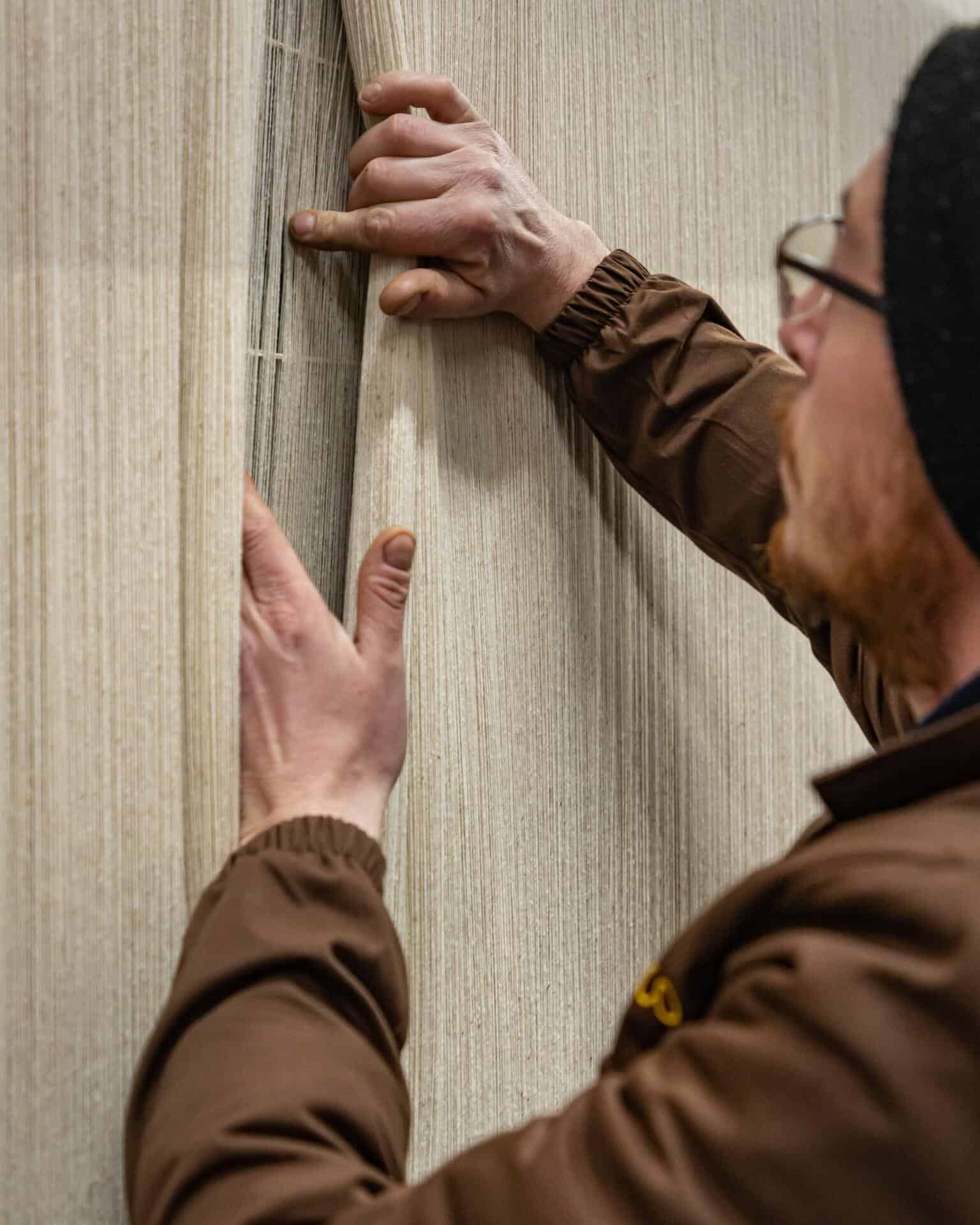
This is the crucial phase before creating the actual recycled wool fabric. A woven fabric is made of two main sets: warp and weft. Warp yarns run with along the length of fabric and weft yarns go across the width of the fabric. The warping phase is the preparation of yarns to weave fabric. It is the transfer of many yarns from the creel of single packages to a beam. The yarns will form a parallel sheet of yarn wound onto the beam. The basic objective of warping is to built a package where yarn ends remain in uniformly set parallel and continuous form, in order for it to be easily put on a loom and be woven.
8) WEAVING the yarns to create the actual recycled wool fabric

The big beams of yarns obtained through the warping phase are sent to the weaving mill, the place where the actual recycled wool fabric comes to life. Weaving is the process through which a fabric is made by interlacing warp and weft threads thanks to a loom. The beam with warp yarns is set on the loom, the weft yarns passes across the loom in a shuttle, which carries the yarns on a pirn.
The result of the weaving phase is the greige fabric, which is tested and then sent to the finishing mill.
9) FINISHING the recycled wool fabric to give it a specific look

The finishing mill is the place that literally ennobles and enhances the look, performance and handfeel of greige fabrics, which usually are never readily usable. The newly born recycled wool fabric undergoes a series of wet, physical processes and treatments: such as fulling, tumbler washing, KD, raising, brushing, you name it, depending on the final look that is requested by brands or chosen by the textile mill.
The final look of a recycled wool fabric can vary a lot, depending on many factors: the structure and weave that is chosen, if it's solid or patterned, and how it is finished
The evolution from traditional recycled wool to MWool® by Manteco, the next generation of recycled wool
Manteco has been improving wool recycling processes for more than 80 years, since 1941, with the constant aim of taking recycled wool to the next level. MWool® is the result of all our heritage, know-how and innovation. It guarantees top quality standards, thanks to a great selection and testing of raw materials (more than 150 tests in total), a masterful processing and our Durability Treatment, which makes the fibers more resistant and enduring. We provide designers a choice of more than 1000 no-dye colors thanks to the unique Recype® process: our circular, chemicals-free, dyes-free and unique way to create recycled wool colors; thanks to this technique we manage to devise new wool colors just by mixing different fibers and shades. MWool® is also the world’s first recycled wool to be analyzed with a certified Life Cycle Assessment, which allowed us to provide science-based data on its low impact.
About Manteco, Italian premium textiles and circularity since 1943
After decades in the fashion world, in 2018, we have created the Manteco Academy project, through which we give webinars, in-person lessons and workshops on eco-design, circular economy and sustainability to numerous fashion schools, technical universities and brands worldwide. Thanks to this educative commitment and our heritage, we are often invited as guest speaker at events, panels, podcasts and conferences about sustainable fashion and circular economy.


